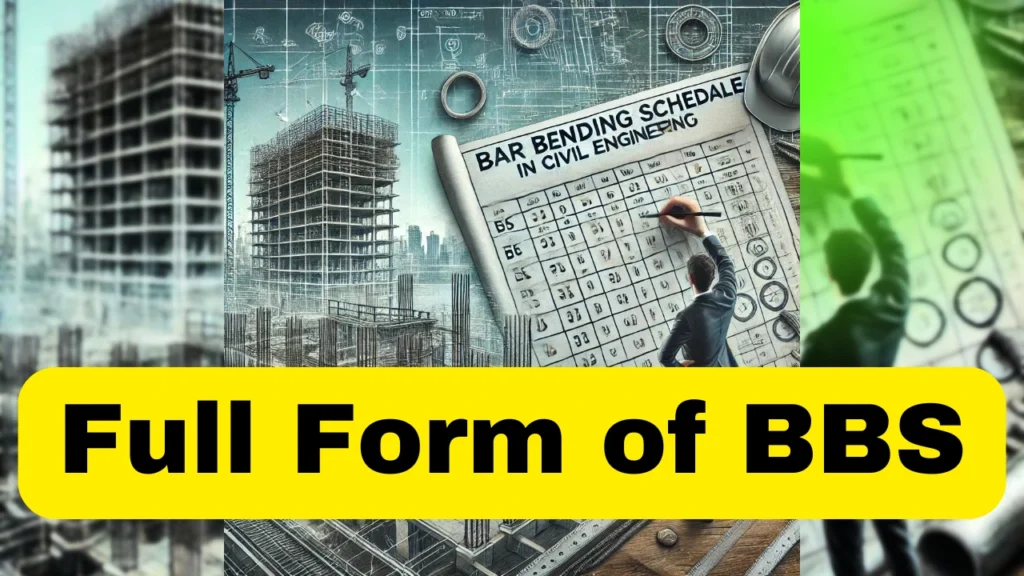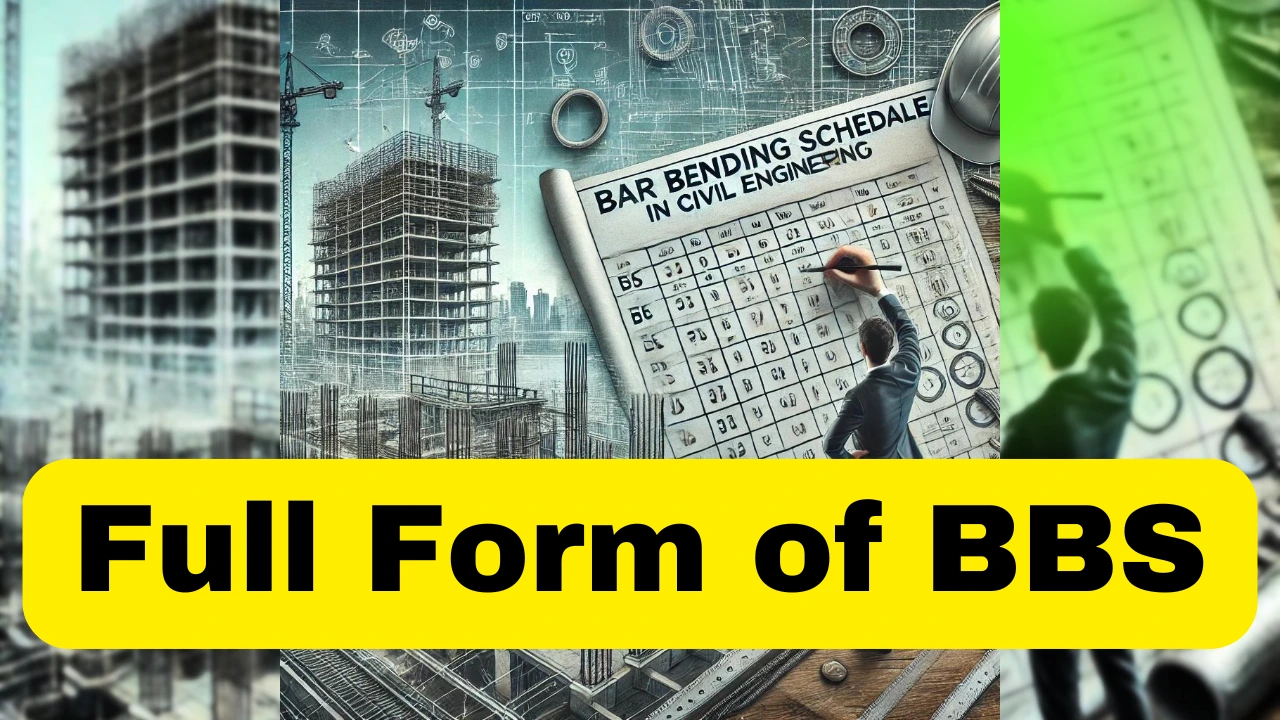Table of Contents
Bar Bending Schedule (BBS) in Civil Engineering: A Comprehensive Guide
Full Form of BBS
Bar Bending Schedule (BBS) is a detailed list of reinforcement bars (rebar) used in structural elements, providing details such as bar shape, size, length, quantity, and bending angles.
What is BBS in Civil Engineering?
BBS is an essential document in civil engineering projects that details the reinforcement bars for various structural elements like beams, columns, slabs, and footings. It helps estimate the quantity of rebar required and ensures accurate cutting and bending.
Applications of BBS
- Reinforced Concrete Structures: BBS is used for beams, slabs, columns, foundations, etc.
- Cost Estimation: Helps estimate rebar quantities, minimizing waste and cost overruns.
- Site Execution: Ensures accurate placement of rebar on-site.
- Quality Control: Used to inspect the accuracy of reinforcement placement.
Why is BBS Important?
- Accuracy: Provides exact cutting lengths and bending angles for rebar.
- Material Estimation: Prevents overbuying or shortages in rebar materials.
- Cost Control: Minimizes material wastage.
- Structural Integrity: Ensures reinforcement is placed correctly for safety and durability.
How to Prepare BBS?
- Understand the Design: Study the structural drawing to identify rebar sizes and types.
- Determine Bar Shapes: Identify required shapes like straight bars, L-bends, and hooks.
- Calculate Cutting Lengths: Calculate the required lengths based on bending details.
- Organize in Table: Record all details like bar size, shape, and quantity in a BBS table.
Example of a Bar Bending Schedule

| Structural Element | Bar Size (mm) | Bar Shape | Length (m) | Quantity | Bending Details |
|---|---|---|---|---|---|
| Beam B1 | 12 | Straight | 6 | 10 | N/A |
| Column C2 | 16 | L-Bend | 4.5 | 8 | 90° at 0.3m |
| Slab S3 | 10 | U-Bend | 3 | 12 | 135° at 0.15m |
| Footing F1 | 20 | Hook | 5.5 | 6 | 180° at 0.4m |
When is BBS Needed?
- During the planning phase to estimate material costs.
- Before construction to ensure rebar availability.
- During construction for accurate cutting, bending, and placement.
- For quality control and inspections.
Job Opportunities in BBS
- Site Engineer: Ensures rebar placement per the BBS.
- Quantity Surveyor: Uses BBS for cost estimation.
- Structural Engineer: Prepares and reviews BBS as part of design.
- Reinforcement Detailer: Specializes in preparing BBS.
- Project Manager: Oversees the use of BBS in planning and execution.
Where is BBS Needed?
- Building Construction: Used for all structural elements.
- Infrastructure Projects: Essential in bridges, dams, tunnels, etc.
- Industrial Projects: Used for factory, warehouse, and heavy-duty structures.
Conclusion
Bar Bending Schedule (BBS) is a critical tool in civil engineering for ensuring precision in the construction process, reducing wastage, and maintaining structural integrity. Whether you are a site engineer, quantity surveyor, or structural engineer, understanding and using BBS is essential for the success of any project.
Bar Bending Schedule (BBS) in Civil Engineering
Full Form of BBS
Bar Bending Schedule (BBS) is a list of reinforcement bars, detailing size, shape, and quantity.
Applications
- Reinforced Concrete Structures
- Cost Estimation
- Site Execution
- Quality Control
Why BBS?
- Ensures Accuracy
- Helps in Estimation
- Cost Control
- Improves Structural Safety
How to Prepare
- Understand the Design
- Determine Bar Shapes
- Calculate Cutting Lengths
- Record in a Table
BBS Example
See the table for an example of a BBS including the bar size, shape, length, and quantity.
When is BBS Needed?
- During Planning
- Before Construction
- During Execution
- For Quality Control
Job Opportunities
- Site Engineer
- Quantity Surveyor
- Structural Engineer
- Reinforcement Detailer
Where is BBS Needed?
- Building Construction
- Infrastructure Projects
- Industrial Projects
Conclusion
BBS is vital for the precision and success of any civil engineering project, reducing waste and enhancing quality.

Hi! I’m Sandip, a civil engineer who loves sharing about Civil Engineering & new ideas and tips. My blog helps you learn about engineering in a fun and easy way!

